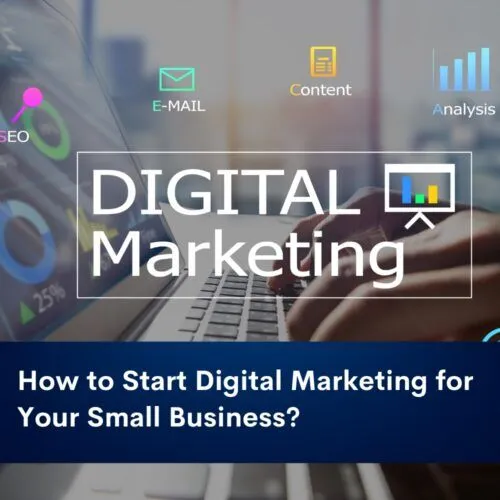How to Start Digital Marketing For Your Small Business?


How to Start Digital Marketing for Your Small Business?
Introduction
Define Your Goals
Defining your goals is a critical first step in digital marketing. It sets the direction for your efforts and allows you to focus on strategies that will bring the desired results. Let’s take a closer look at how clarifying your objectives can shape your digital marketing strategies and lead to increased sales.
If your goal is to increase sales, your primary focus will be on optimizing your website for conversions. This involves ensuring that your website is user-friendly, visually appealing, and provides a seamless shopping experience. You want to make it as easy as possible for visitors to navigate your site, find the products or services they need, and complete the purchase process.
To achieve this, you can implement various strategies. Start by analyzing your website’s performance and identifying any areas that may be causing friction or hindering conversions. This could involve optimizing page load speeds, streamlining the checkout process, and improving the overall user experience.
In addition to website optimization, targeted advertising campaigns can play a significant role in driving sales. By identifying your target audience and understanding their preferences and behaviors, you can create highly tailored and compelling ads that resonate with them. This includes using demographic and interest-based targeting options offered by platforms like Google Ads and social media advertising.
Furthermore, implementing retargeting campaigns can be highly effective in converting potential customers who have shown interest in your products or services but haven’t made a purchase yet. By displaying personalized ads to these individuals as they browse the web, you can remind them of what they were interested in and encourage them to complete the purchase.
Tracking and measuring the performance of your campaigns is crucial to determining their effectiveness and making data-driven decisions. By utilizing tools like Google Analytics and setting up conversion tracking, you can monitor key metrics such as conversion rates, revenue generated, and return on investment (ROI). This data will help you identify areas of improvement, optimize your campaigns, and allocate your marketing budget more effectively.
Remember, increasing sales is a continuous process that requires ongoing refinement and adaptation. Regularly analyze your results, experiment with different strategies, and stay updated with the latest trends and technologies in digital marketing. By aligning your efforts with your sales goals and continuously optimizing your strategies, you can drive meaningful business growth and achieve the results you desire.
Research Your Target Audience
Once you’ve established your goals, delving into understanding your target audience is the next crucial step. By investing time and effort into researching and analyzing your audience, you can gain invaluable insights that will inform your digital marketing strategies and maximize your impact.
Start by leveraging tools such as Google Analytics and social media insights to collect data about your website visitors and social media followers. These tools can provide you with a wealth of information, including demographics (age, gender, location), behavior patterns (pages visited, time spent on site), and interests (affinities, preferences).
Dig deeper by conducting surveys, interviews, or focus groups to gather qualitative data. This can help you understand your audience’s motivations, pain points, and preferences on a more personal level. Consider reaching out to your existing customers or engaging with online communities related to your industry to gather valuable feedback and insights.
As you gather and analyze this data, patterns and trends will emerge, enabling you to create detailed buyer personas. These personas represent fictional profiles of your ideal customers, including their characteristics, goals, challenges, and preferred communication styles. Having well-defined buyer personas allows you to tailor your marketing messages, content, and advertising to resonate with specific segments of your target audience.
Moreover, understanding your audience will help you determine the most suitable channels for reaching them effectively. For instance, if your target audience consists primarily of young professionals, you might want to prioritize social media platforms like LinkedIn or Instagram. On the other hand, if your audience is more mature and professional, you may find that channels like email marketing or industry-specific websites are more effective.
The insights gained from understanding your target audience will guide your content creation efforts. By knowing their interests, pain points, and preferred formats, you can develop content that addresses their specific needs and engages them effectively. Whether it’s informative blog posts, engaging videos, or visually appealing infographics, your content should be crafted to provide value and resonate with your audience.
Additionally, this knowledge will inform your advertising choices, allowing you to target your ads precisely to the right audience segments. By leveraging demographic, interest-based, and behavioral targeting options provided by digital advertising platforms, you can ensure that your ads reach the people most likely to be interested in your offerings.
